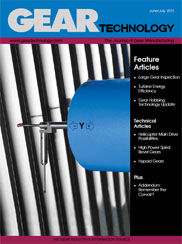In the majority of spiral bevel gears, spherical crowning is used. The contact pattern is set to the center of the active tooth flank and the extent of the crowning is determined by experience. Feedback from service, as well as from full-torque bench tests of complete gear drives, has shown that this conventional design practice leads to loaded contact patterns, which are rarely optimal in location and extent. Oversized reliefs lead to small contact area, increased stresses and noise, whereas undersized reliefs result in an overly sensitive tooth contact.
